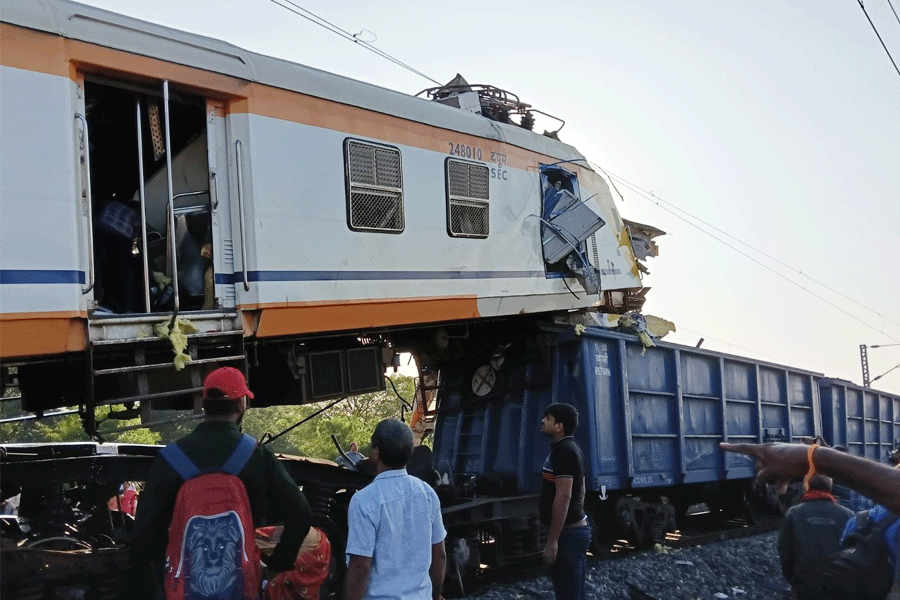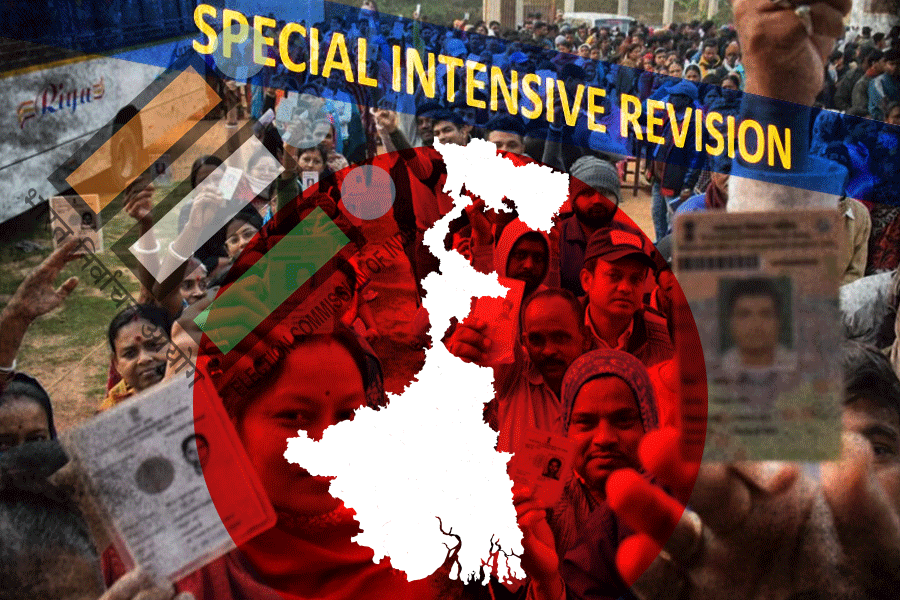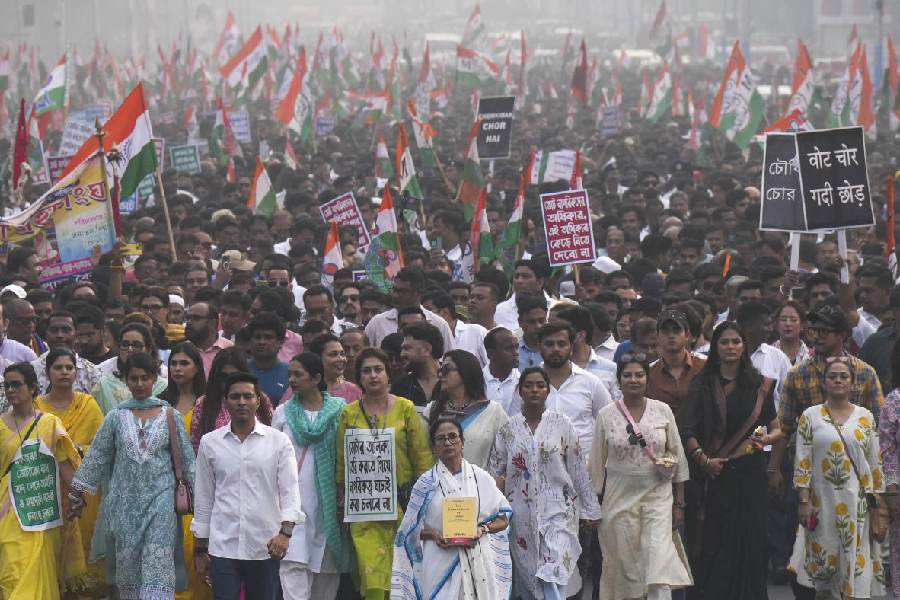 |
| STREETS AHEAD: The India Helps team at the pavement school in Mumbai. (Below) Interior designer turned social blogger Neil Dantas |
 |
It’s just a little over 7.30 am. Some enthusiastic children have taken the task of sweeping the streets. Two boys wield a broom over a small section of a pavement, while another group places two blackboards against the wall. A banner — “Street Children School” — has been propped up. Mats are placed to mark out sections, the teachers walk in and three classrooms are soon in progress.
The school is situated on a pavement in Mumbai, opposite a multi-storeyed private school. It’s just a hundred kilometres from the Sri Binoi Gharde Vidyalaya in Alonde on the Mumbai-Ahmedabad highway. Meritorious students don’t have to walk several kilometres down to the Alonde school anymore — they have all been gifted bicycles.
Help is coming from the unlikeliest corner — the Web. You can be several thousand kilometres from the two schools, but there are many ways of extending a helping hand. And making that possible is a host of websites with a cause.
Welcome to the world of online Samaritans. These are people who have their day jobs or are busy with household chores and yet find time to log on and connect with people across the globe for a cause. There are 21 communities in India dedicated to social causes on the networking site Orkut alone. Niche websites such as www.silverinnings.com are dedicated to senior citizens while www.mumbairewind.blogspot.com, started by a bunch of youngsters, is aimed at changing the face of Mumbai — for the better.
Two women who walk into the pavement school, armed with goodies for its 80 students, are among those who have pledged to do their bit, all thanks to a blog. These women are from India Helps (IH), a blog which provides students with stationery and snacks, incentives that prompt many slum children to attend school. “Whom have you helped today?” is its motto.
People are using technology to stay connected and spread the word. They are setting up blogs, communities on social networking sites and even opening their own domains to spread the good word. “The group mails on Google help us stay connected with every team member from London to Calcutta,” says Kiran Manral, founder of the Mumbai-based IH.
The blog www.indiahelps.blog-spot.com was started after the Mumbai terror attacks of 26/11, as citizens looked for ways to help the victims. “Within a few weeks, I had several bloggers pledging their support and resources,” says Manral, an entrepreneur based in Mumbai. Now it is a prolific outfit that takes care of issues as diverse as slum kids and children in need of urgent medical help.
“We approach families directly as we learn about them from the media and information passed on by well wishers,” says Dilnavaz Bamboat, a founder member of IH. Case studies are put on the blog and website and donors are requested to choose one which they wish to assist.
When Khushroo Poacha, an officer with the Indian Railways in Nagpur, launched www.blooddonors.com in 2000, he was utilising the dotcom boom to make patients who need blood connect with those willing to donate. Less than a decade later, he has 50,000 registered donors from all across the country. “With the click of a button, I am able to connect to at least four or five blood donors in every city free of cost,” says Poacha.
Poacha’s latest initiative — www.givemedicines.org — is aimed at collecting unused medicines and distributing it to non-governmental organisations (NGOs). “Open your cupboards or medicine chest, organise an unused medicine collection drive in your locality or office, and donate them to people who need them,” says Poacha on his website.
The rusting bicycles in his apartment complex gave Hemant Chhabra, the man behind The Bicycle Project, the idea of donating them to students in rural areas. His idea shaped up in November 2008 through a blog with contributions from his wife Sangeeta Chhabra and journalist friend Simona Terron. Hemant, an entrepreneur who runs an eco resort in Maharashtra, has been spending his weekends collecting and repairing old bikes.
Bamboat, a paediatric therapist and a pre-school owner in Mumbai, is currently working on the case of Ahana Mishra, a cerebral palsy afflicted six-year-old who hit the headlines after her mother was murdered last year. She had earlier been abandoned by her father when he got to know of her medical condition. The IH team has prepared posters asking for help to meet the child’s medical expenses and the members have so far donated over Rs 50,000 from their kitty.
“The IH team members are a big moral support. They interact with the doctors and help me with several legal issues involved with the case,” says Purnima Goswami, Ahana’s 70-year-old grandmother. “The family will soon relocate to Calcutta and our volunteers there will be in touch with them,” adds Bamboat.
Some Samaritans have even gone to the extent of leaving their day jobs to pursue social activities on blogs and networking sites. Neil Dantas, who quit his job as an interior designer in 2008, started blogging after the Mumbai train blasts of 2006. He started www.thedoers.blogspot.com to go beyond armchair activism — and now sees it as a vehicle for change. Mumbaikar Dantas supports himself by designing T-shirts with social yet witty messages that are put up on the blog. “It serves a dual purpose,” says Dantas — earning him a livelihood and spreading messages across.
“My blog is an awareness site that talks of issues ranging from the security of our country to choosing whom to vote for. The idea is to make ‘be the change’ a people’s movement,” says 30-year-old Dantas who is still grappling with paying off his education loan and finding a foothold in the design industry.
Their work does not end with a blog or a website. Many of the bloggers have moved out of their virtual world to make their presence felt. IH has started making presentations to companies to raise funds for its work. The Bicycle Project Team recently announced a short film contest in association with a film club in Mumbai to spread its message far and wide. Poacha sends out stickers to volunteers in various cities to be put up on boxes to collect unused medicines.
Bodies are being registered to lend credibility to the organisations. “Will people trust me with their money if I am not registered,” asks Hemant. Also, as Manral puts it, people often ask for receipts for tax declaration purposes. The Bicycle Project and IH are in the process of getting registered as non-profit organisations. “We would designate roles for each team member when the organisation is in place,” says Simona Terron of The Bicycle Project.
The response from people, the organisers say, has been overwhelming. Manral was taken aback when people from the UK and US started posting comments on her blog offering advice and help. Some have contributed cash, and many have helped in other ways. “It started as an appeal and now it is going to be a full-fledged organisation with people from all walks of life joining in,” says Manral, who has not met several people in her 40-member team who live in other cities.
The Bicycle Project team has been flooded with bikes — so much so that it now has to deal with offers coming from outside Maharashtra. “It makes no sense transporting bicycles from places like Calcutta or Bangalore to Maharashtra,” says Hemant. The group is now tying up with local NGOs in other cities to get and distribute cycles.
Meanwhile, Neil Dantas has been invited by a Delhi designer to display his social messages — such as “Terror is like a bad tooth: it needs extraction” — in her designs. So when he says, “We are the doers”, one believes him. He and many others are doing it, virtually and actually.










